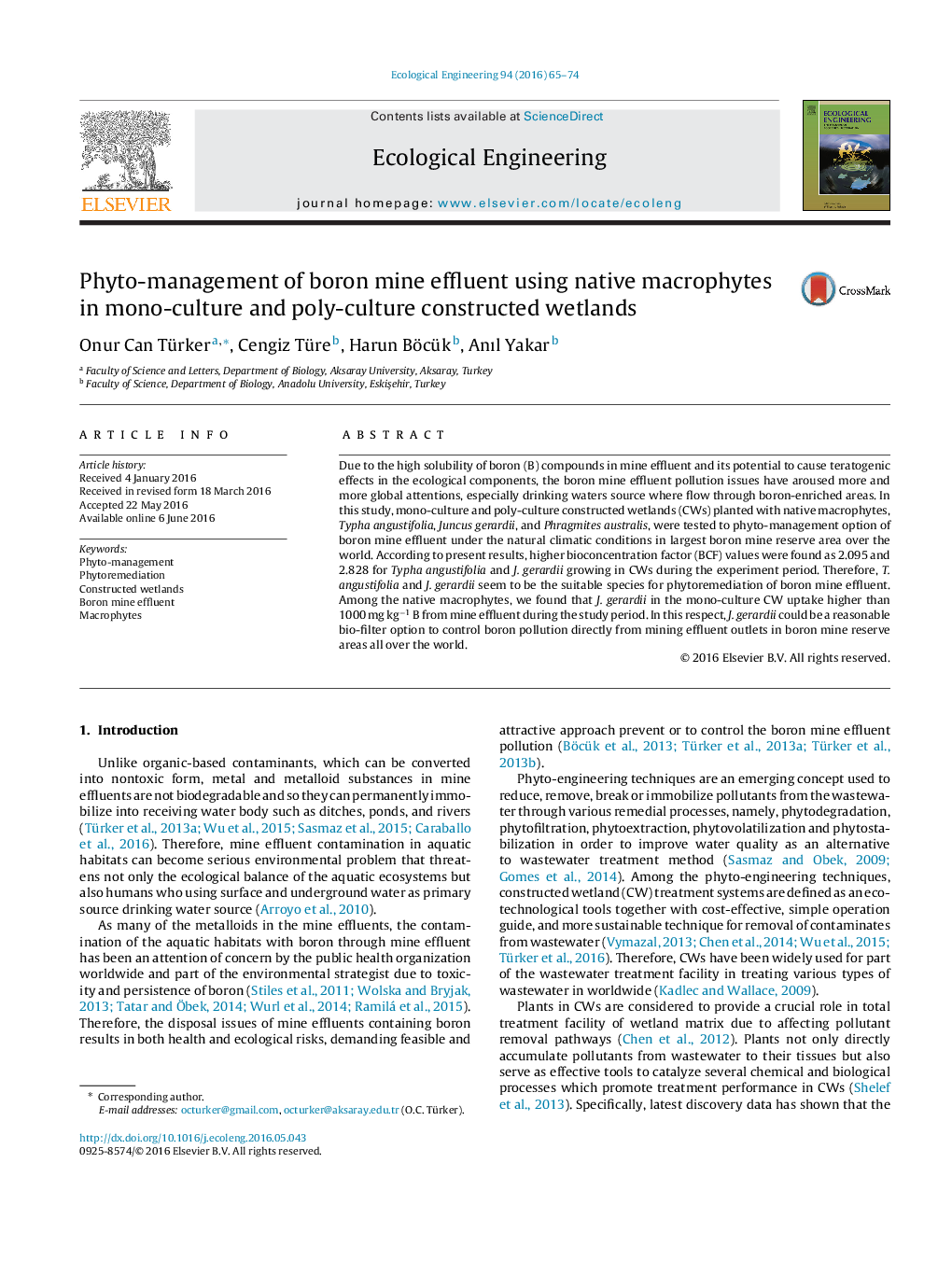| Article ID | Journal | Published Year | Pages | File Type |
|---|---|---|---|---|
| 4388532 | Ecological Engineering | 2016 | 10 Pages |
•Constructed wetlands were tested for phyto-management of boron (B) mine effluent.•T. angustifolia and J. gerardii were potential new species for B phytoremediation.•The maximum bioconcentration factor (BCF) value was found for J. gerardii as 2.828.•B value ranged from 12.8–15.2 mg l−1 is an attractive gradient for B phytoremediation.
Due to the high solubility of boron (B) compounds in mine effluent and its potential to cause teratogenic effects in the ecological components, the boron mine effluent pollution issues have aroused more and more global attentions, especially drinking waters source where flow through boron-enriched areas. In this study, mono-culture and poly-culture constructed wetlands (CWs) planted with native macrophytes, Typha angustifolia, Juncus gerardii, and Phragmites australis, were tested to phyto-management option of boron mine effluent under the natural climatic conditions in largest boron mine reserve area over the world. According to present results, higher bioconcentration factor (BCF) values were found as 2.095 and 2.828 for Typha angustifolia and J. gerardii growing in CWs during the experiment period. Therefore, T. angustifolia and J. gerardii seem to be the suitable species for phytoremediation of boron mine effluent. Among the native macrophytes, we found that J. gerardii in the mono-culture CW uptake higher than 1000 mg kg−1 B from mine effluent during the study period. In this respect, J. gerardii could be a reasonable bio-filter option to control boron pollution directly from mining effluent outlets in boron mine reserve areas all over the world.
Graphical abstractFigure optionsDownload full-size imageDownload as PowerPoint slide
